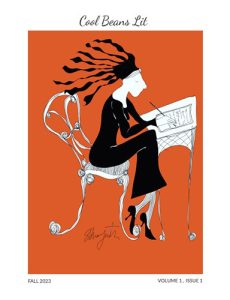Saint John of the Five Boroughs
Falco begins this novel by introducing us, one by one, to the characters: Avery, a rebellious art student at Penn State, Lindsey and Hank, Avery’s aunt and uncle, and Kate, Avery’s widowed mother who is having an affair with Hank, her brother-in-law. The main story involves Avery and Grant, a thirty-something former performance artist from New York she meets at a campus party. Avery runs away to New York with the mysterious Grant after knowing him for less than 24 hours. In New York, Avery is thrown into the heart of the avant-garde art scene; Grant’s friends include a famous artist, a successful TV writer and a restaurateur. Grant himself had early success as a writer, but after he killed a man in self-defense while trucking stolen goods across state lines for his shady uncle Billy, he stopped writing. Now Grant’s only source of income is further work for Billy, who keeps him on the fringes of his criminal enterprises out of respect for his brother, Grant’s father.
Falco begins this novel by introducing us, one by one, to the characters: Avery, a rebellious art student at Penn State, Lindsey and Hank, Avery’s aunt and uncle, and Kate, Avery’s widowed mother who is having an affair with Hank, her brother-in-law. The main story involves Avery and Grant, a thirty-something former performance artist from New York she meets at a campus party. Avery runs away to New York with the mysterious Grant after knowing him for less than 24 hours. In New York, Avery is thrown into the heart of the avant-garde art scene; Grant’s friends include a famous artist, a successful TV writer and a restaurateur. Grant himself had early success as a writer, but after he killed a man in self-defense while trucking stolen goods across state lines for his shady uncle Billy, he stopped writing. Now Grant’s only source of income is further work for Billy, who keeps him on the fringes of his criminal enterprises out of respect for his brother, Grant’s father.
The theme of violence is a common thread throughout the story: Grant’s father was abusive, Grant and Avery’s first sexual encounter borders on rape, Lindsey’s brother is killed in Iraq, and Grant is haunted by his memories of killing the man on the highway. Falco explores the idea that we all harbor the capacity for violence, even murder, and the line between murderer and ordinary guy is a finer one than we might imagine. The novel ends on a hopeful note, however, implying that even though we have the capacity for violence, we can still choose to turn away from it.
The strength of Falco’s writing is his pacing and plot; at the risk of sounding cliché, the book truly is hard to put down. Avery and Grant are interesting characters, if not always likeable, and Falco skillfully avoids lulls in the action. The subplots involving Hank’s affair with Kate and the death of Lindsey’s brother are less compelling (the affair almost has a soap-opera quality to it), but they still keep you reading.
Falco’s style is fairly straightforward; his occasional attempts at lyricism sometimes hit, sometimes miss. Oddly worded sentences sometimes stop the flow of reading; in one scene where Lindsey is musing on how losing loved ones affects her own identity, Falco writes, “The her that she was in the mind of her father through which she saw and knew herself was gone. . . The she she was in her mother’s eyes long gone. What was left was who she was to Hank and Keith, and the problem was that that her wasn’t her, not really.” The idea here is insightful, but the wording seems designed to trip up the reader.
Overall, Falco’s novel is a fast-paced read that, with its dramatic, violent climax, is easy to imagine as a movie. If you’re looking for a lyrical, poetic tour de force, you’re in the wrong place. But if you’re up for a good, suspenseful read that’ll keep you turning pages, Falco delivers.





